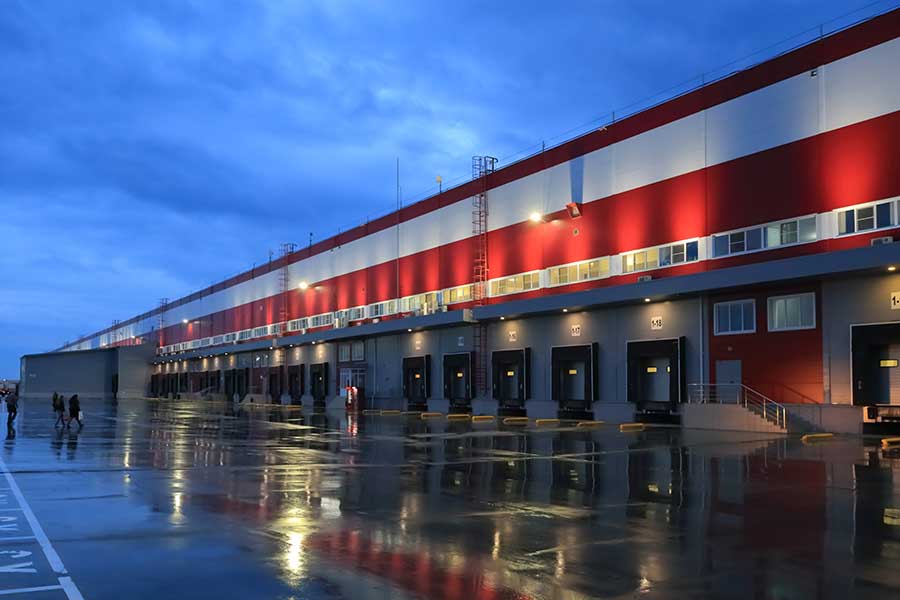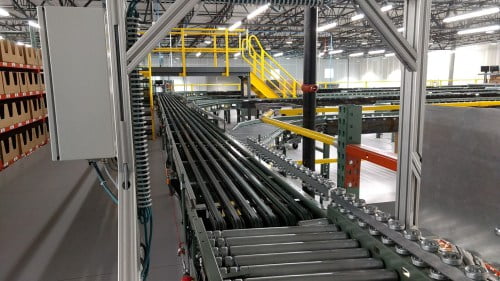Published July 13, 2021
Once you have identified the prime geographic area for the new facility and management has approved the strategic distribution network plan, the next step is selecting the best community and site. This is the most difficult and time-consuming part of the planning process. Initially, there may appear to be many prospective locations. One mistake frequently made at this point is looking at sites before the overall approach has been determined. The site selection team needs to make inquiries or get outside assistance to narrow down the potential communities because each detailed site search could take hours or even days. Support for narrowing the list of communities can come from many sources:
- Real estate brokers are typically tied into the multiple listing service that lists all available properties in an area. Remember, however, that brokers are compensated for a successful transaction. This may or may not create pressure that could affect the search.
- Utility companies are a good source of information because they typically have large service areas. However, utilities divide territories into regions and have regional salespeople who are geared toward increasing revenues in their region. If you have decided on a particular region, though, a utility should provide an unbiased source for identifying industrial sites in the area.
- Government agencies, including state and local government development agencies, as well as local chambers of commerce, are also reliable information sources once the decision as to community has been made. Since these groups are motivated to attract new industry into their area, make sure the area is where you really want to be before relying on their advice.
- Consultants provide an unbiased source of advice and save many hours of time. In selecting a consultant, one important consideration is whether the individual is truly independent and objective.
The best way to narrow your selection to a few communities is to create a checklist of key requirements. If a community does not meet the requirements, eliminate it from further consideration. Some of the factors that should be included on the checklist are listed in Table 6.3.
| Table 6.3: Community Considerations | |
| Labor | Unions (yes/no), availability of qualified personnel, wage levels, accident rate in area, community education or training programs, employment laws, right-to-work laws, local safety and health costs, availability of management personnel |
| Utilities | History of outages, rates, off-peak rates, discounts or penalties, residential rates, water conditions and chemical analysis, water, source, refuse and trash collection costs, frequency and disposal methods, communications |
| Community | Availability of shopping, housing availability and cost, travel and meeting facilities, news media availability, traffic levels, organizations, mail service, health facilities, protective services (fire and police), education, recreation, religious activities, cultural facilities |
| Existing industry | Major operations in area, possible suppliers and customers, civic participation, union affiliations, environmental conditions, support to the community, number of plants gained and lost in the last five years |
| Local and state government | Voting record of incumbents, annual budget, sources of revenue, annexation policies, attitude during strikes, property taxes, sales tax, financial health of state and community, amount of tax-free property, any community taxes |
| Miscellaneous | Weather conditions (temperature, rainfall, snowfall, humidity, days of sunshine), planning and zoning history and makeup, commercial services in the area (banks, industrial distributors, office supplies, industrial repair shops) |
| Rail | Railroad stop-off privileges for partial loading/unloading en route, transportation demurrage charges, reciprocal switching arrangements, pickup and delivery, services, freight schedules |
| Highway and truck transportation | State laws as to truck size and weight, toll roads and bridges, condition of roads, highway access |
| Miscellaneous transportation |
Air: site near airport, schedule of airlines, personnel transport schedules
Water: channel width and depth, terminal facilities, seasonal limitations
Other: bus service, taxi service, rapid transit, auto rental agencies
|
Once the community list has been shortened, make site visits to view alternative lease facilities or land and buildings for sale. Before visiting each site, create another checklist that covers considerations such as zoning, topography, landscaping requirements, access to site, storm drainage, floor loadings, lighting levels, clear height, communication infrastructure and utilities. Prioritize these considerations and then give a grade to each site based on how well it meets the criteria. Many of the items on the list, such as utility cost, may require extensive investigation before a final evaluation can be made.
Foreign Trade Zones
One of the considerations in selecting a site is whether or not a free trade zone is applicable to your company’s needs. Foreign trade zones (FTZs) or “free” trade zones are secured areas within the United States that are legally considered to be outside the country. Foreign and domestic goods may generally be stored, processed or manufactured duty-free in the FTZ. The purpose is to attract and promote international trade and commerce. Typically, zones are operated as public utilities by states or private companies performing under contract with public institutions that are the formal sponsors. FTZs are becoming more easily established and can be set up in any location if the proper paperwork, procedures and controls are established and followed by the distribution operation. This is especially critical in reporting inventory ownership and transfer to point of use. FTZs are fenced-in areas with general warehouse facilities and industrial park space. They typically have access to all modes of transportation and are located in or near U.S. customs ports-of-entry. FTZs are the U.S. version of what are known internationally as free trade zones.
Sub-zones are adjuncts to zones and are granted to companies that cannot be accommodated in the primary zone. Each exists only for a single user, and strict criteria must be satisfied for sub-zone status. Typically, a sub-zone must generate a public benefit, such as employment. Most manufacturers that assemble imported products typically fall into the sub-zone classification.
The advantages of using an FTZ are:
- Customs duty and internal revenue tax, if applicable, paid only when merchandise is transferred from an FTZ to the custom territory for consumption
- Goods may be exported from a duty- and tax-free zone
- Merchandise may remain in a zone indefinitely, whether or not subject to duty
Any foreign goods or materials brought into a zone for any permissible activity and ultimately shipped to a third country, either in their original or a completely altered condition, are not subject to customs duties or federal excise taxes and usually are not chargeable against quotas. Local and state authorities should be contacted about any local or state taxes. What is not always understood, and is often overlooked, is the use of zone status in exporting. Companies that intend to market their manufactured goods in other countries should research the viability of an FTZ.
Any foreign or domestic merchandise not prohibited by law, whether requiring duty fees or not, may be taken into an FTZ. There are material operations that the FTZ’s controlling authority may exclude, and it may deny permission to use the zone if it decides the activity or material involved is detrimental to the public interest, health or safety. Certain agencies that license importers or issue importation permits may block zone entries. Many products subject to internal revenue tax may not be manufactured in a zone. These include alcoholic beverages, tobacco, firearms, white phosphorous material and sugar. In addition, the manufacture of clocks and watch movements is not permitted in a zone. Retail trade is also not permitted in a zone.
In today’s constantly changing environment, finding the right facility and location for your distribution operations is more important than ever. While it is impossible to predict the future, it is important to select a site with the flexibility to accommodate various designs to ensure your operations can meet your current and future needs. Contact us today to learn how we can help you select the best site for your distribution operations.



